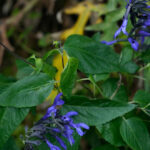Kissing bugs, also known as triatomine bugs, are nocturnal insects notorious for their blood-feeding habits, often targeting humans around the mouth while they sleep – hence their name. Found predominantly in the Southern and Western United States, Mexico, and throughout Central and South America, these bugs are vectors of a serious health concern. A common question arising when considering these insects is: Can Kissing Bugs Fly? Understanding their capabilities, including their ability to fly, is crucial for comprehending their behavior and the risks they pose.
Kissing Bugs: An Overview of These Nocturnal Feeders
Kissing bugs are not a single species but a group of insects. In the United States alone, there are 11 recognized species. Regions like Texas, New Mexico, and Arizona are particularly known for higher kissing bug populations and a greater diversity of species. Research institutions, such as Texas A&M University with its Kissing Bugs & Chagas Disease in the United States Community Science Program, actively monitor these insects, identifying samples sent in from the public and contributing to our understanding of their distribution and prevalence.
Alt text: Close-up of a kissing bug feeding on human skin, highlighting its blood-feeding behavior and potential bite location.
Do Kissing Bugs Fly? Unpacking Their Flight Capabilities
Yes, kissing bugs can fly. They possess wings and are capable of flight, although they are not considered strong fliers. Their flight is generally characterized as clumsy and short-distanced. This ability to fly is important for several aspects of their life cycle and behavior:
- Dispersal: Flight allows kissing bugs to disperse and colonize new habitats. This is particularly relevant as they seek out new sources of blood meals and suitable breeding grounds.
- Seeking Hosts: While they are often ground-dwelling, their ability to fly allows them to access homes, especially if there are openings in walls, roofs, or around windows and doors. They are attracted to lights at night, which can lead them towards human dwellings.
- Mating: Flight plays a role in the mating process of kissing bugs, enabling them to find partners.
However, it’s important to note that kissing bugs are more commonly observed crawling. Their primary mode of locomotion is walking, and they are often found on the ground, in cracks and crevices, and in rodent nests or animal burrows. Their flight is not as agile or sustained as that of many other flying insects.
Risks Associated with Kissing Bugs: Chagas Disease
The primary concern with kissing bugs is not their bite itself, which can be relatively painless, but their potential to transmit the parasite Trypanosoma cruzi. Approximately 50% of kissing bugs in the U.S. are estimated to carry this parasite, which can cause Chagas disease, also known as American trypanosomiasis.
Transmission typically occurs when an infected kissing bug defecates after feeding. If the person scratches the bite area, they can inadvertently rub the bug’s feces into the wound, eyes, mouth, or nose, leading to infection. While this is the most common route of transmission, it is not the only one.
Alt text: Detailed image of a kissing bug showcasing its distinctive features, including its cone-shaped head and slender body, important for identification.
Chagas disease can have serious health consequences if left untreated. While effective treatments are available, chronic Chagas disease can lead to severe complications in about 20-30% of infected individuals, including:
- Cardiac Issues: Enlarged heart, heart failure, irregular heart rhythms, and increased risk of sudden cardiac death.
- Gastrointestinal Problems: Enlarged esophagus or colon, leading to difficulties in swallowing and bowel movements.
Individuals with weakened immune systems and young children are particularly vulnerable to severe Chagas disease outcomes.
Protecting Yourself from Kissing Bugs
Understanding that kissing bugs can fly is just one piece of the puzzle in protecting yourself and your family. Here are some preventative measures:
- Seal Entry Points: Seal cracks and gaps in walls, roofs, windows, and doors to prevent bugs from entering your home.
- Screen Windows and Doors: Ensure screens are in good repair to keep insects out.
- Outdoor Lighting: Reduce outdoor lighting, as it can attract kissing bugs. If outdoor lights are necessary, use yellow or sodium vapor lights, which are less attractive to insects.
- Pet Sleeping Areas: Keep pet sleeping areas clean and away from bedrooms if possible, as pets can sometimes bring bugs indoors.
- Check Outdoor Areas: Be cautious when spending time in sheds, barns, or under porches, as these are potential habitats for kissing bugs.
Conclusion: Awareness and Caution Regarding Kissing Bugs
While kissing bugs are capable of flight, understanding the nuances of their movement and the associated risks is paramount. Their ability to fly contributes to their dispersal and host-seeking behavior, increasing potential human contact. By taking preventive measures and seeking medical attention if you suspect a bite or potential exposure, you can minimize the risk of Chagas disease and coexist safely with these insects in regions where they are prevalent. Awareness and proactive steps are key to staying safe from kissing bugs and the health concerns they may carry.

